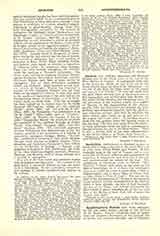

Apophthegmata Patrum (apo, from; phtheggomai, to cry out; pater, father), sayings of the Fathers of the Desert. Various collections exist of aphorisms and anecdotes illustrative of the spiritual life, of ascetic and monastic principle, and of Christian ethics, attributed to the more prominent hermits and monks who peopled the Egyptian deserts in the fourth century. Three or four such collections in Latin were edited by Rosweyde (Vitae Patrum, Bks. III, V, VI, VII; P.L., XXIII), one in Greek by Cotelier (Ecclesiae Gracie Monumenta, I; P.G., XV), and a Syriac collection lately included in the editions of Anan Isho’s “Paradise” by Bedjan (Paris, 1897), and Budge (London, 1904), the latter supplying an English translation. In all these collections the great mass of material is the same, although differently disposed, and it is now agreed that our actual apophthegma literature is Greek, though no doubt much of it is ultimately of Coptic origin. The stages in the growth of the extant collections of “apophthegmata” may be traced with some certainty. In the course of the fourth century this or that saying of the more famous ascetics was repeated by their disciples, and thus circulated. There is no reason to doubt that these sayings and anecdotes were in large measure authentic, but no doubt many were attributed to wrong persons, and many more were apocryphal inventions. These single sayings tended to coalesce into groups, sometimes as the apophthegmata of one Father, sometimes as those dealing with the same subject. Out of these groups were formed the great collections which we have. They are arranged on an alphabetical principle, or according to the subject-matter. Of such collections, that contained in the fifth and sixth books of Rosweyde’s “Vitae Patrum” is known to have existed before the end of the fifth century.
As to the character of the apophthegmata we find that, while they contain a certain grotesque element, the general teaching maintains a high level. They cover the whole field of the spiritual and religious life, and are a veritable storehouse of ascetic lore. Many of them have a primitive freshness and quaintness, and a directness that comes from a deep knowledge of the human heart. They almost always possess a simple beauty that makes them interesting and wholesome reading, and at times they rise to great mystic heights. Along with Cassian, the apophthegmata reveal to us the wellsprings of Christian spirituality and religious life.
E. CUTHBERT BUTLER

